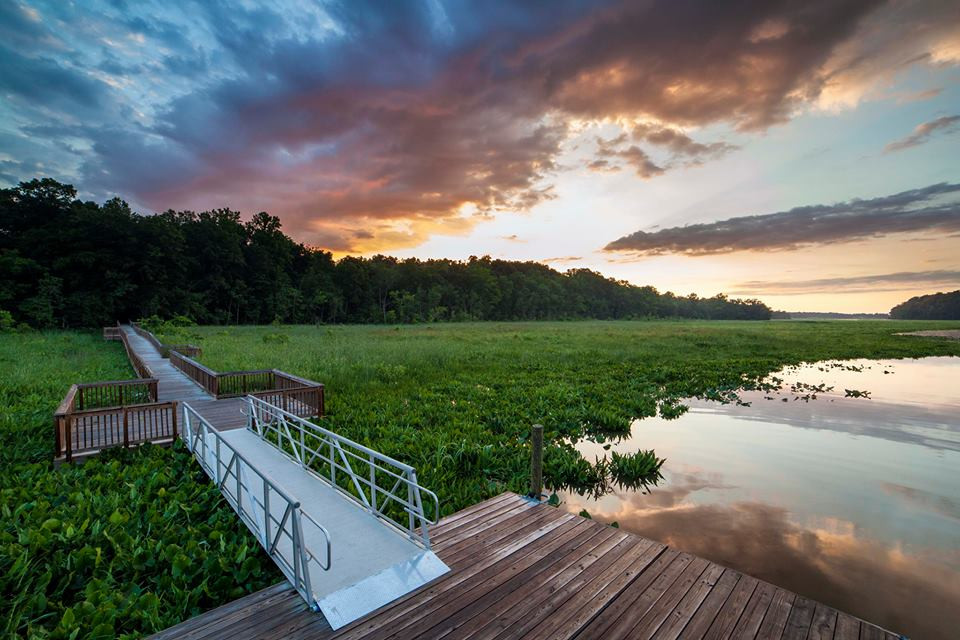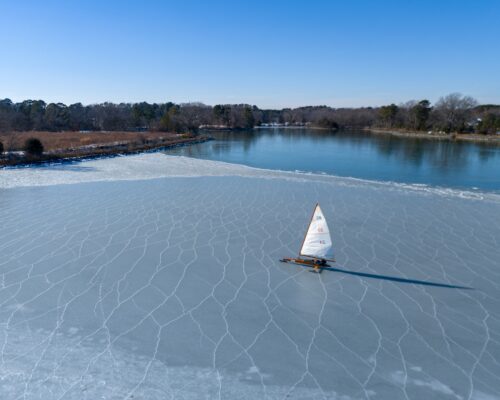If escaping to nature means having a trail to yourself or quiet wetlands to paddle through, look no further than Virginia’s Crow’s Nest Natural Area Preserve. Less than a half-hour’s drive northeast of Fredericksburg, Virginia, or an hour south of Alexandria depending on where you begin, lies this low-profile Chesapeake natural area with hiking trails, a launch for paddle craft, and close encounters with an ecosystem largely unchanged for hundreds of years.
Crow’s Nest is a peninsula of mature coastal plain hardwood forest and wetlands nestled between the Potomac and Accokeek Creeks in Stafford County. Stafford County and the Virginia Department of Conservation & Recreation (DCR) co-own the preserve, which today covers 3,970 acres.
Deep ravines and large tidal freshwater marshes form the peninsula’s dramatic topography. Oaks and tulip poplars as large as four feet in diameter and over 100 feet tall grow here. This refuge provides excellent nesting habitat for bald eagles and some 60 species of neotropical migratory songbirds, as well as wintering ground for migratory ducks, geese, and tundra swans. The waters are home to a wide range of resident and migratory fish, from largemouth bass, yellow perch, and blue catfish to shad, river herring, white perch, and striped bass (rockfish).
Despite being within easy reach of several million Northern Virginia residents and visitors, a trip to Crow’s Nest is a trip back in time. Archaeological evidence suggests Native Americans have inhabited this land for at least 11,000 years. Capt. John Smith and his crew visited the chief of the Patawomeck Tribe here in July of 1608. The chief’s home sat at the confluence of the Potomac and Accokeek Creeks, where they met the Potomac River, so Smith named both the river and the creek for the tribe on the map he published in 1612. Many Patawomeck Tribe members still live nearby.

DCR Division of Natural Heritage.
Smith’s map lured English colonists to the Potomac River, making it a busy highway in the 17th and 18th centuries. The establishment of our nation’s capital began a period of explosive growth throughout the region. Even so, the Crow’s Nest has remained an island of wildness. A look at it on Google Earth shows dense woodlands broken only by the dotted lines of the trail system, the marshes along the two creeks, and the newly-preserved Accokeek Bottomlands which buffer along that creek.
Visitors have two access options. The Raven Road entrance has an 18-car parking area and 8 miles of hiking trails within the forested interior. It is open Thursday through Sunday. The Brooke Road entrance has parking for 20 cars, a shoreline birding/nature trail with views of Accokeek Creek, and an ADA-accessible canoe/kayak launch facility for the Crow’s Nest Water Trail. The Brooke Road Access is open 7 days a week. For exploring these rich and historic waters more broadly by outboard skiff, the Fairview Beach Marina on the south side of the Potomac River just outside the creek’s mouth offers a launch ramp.
Download the Crow’s Nest Natural Area Preserve Hiking & Water Trails Map for more information and keep up with current happenings on the preserve’s Facebook page.
To read about the natural and human history of the Crow’s Nest, I recommend A Field Guide to Crow’s Nest: The History, Science & Culture Behind One of Virginia’s Premiere Natural Treasures by environmental scientist Hal Wiggins.




